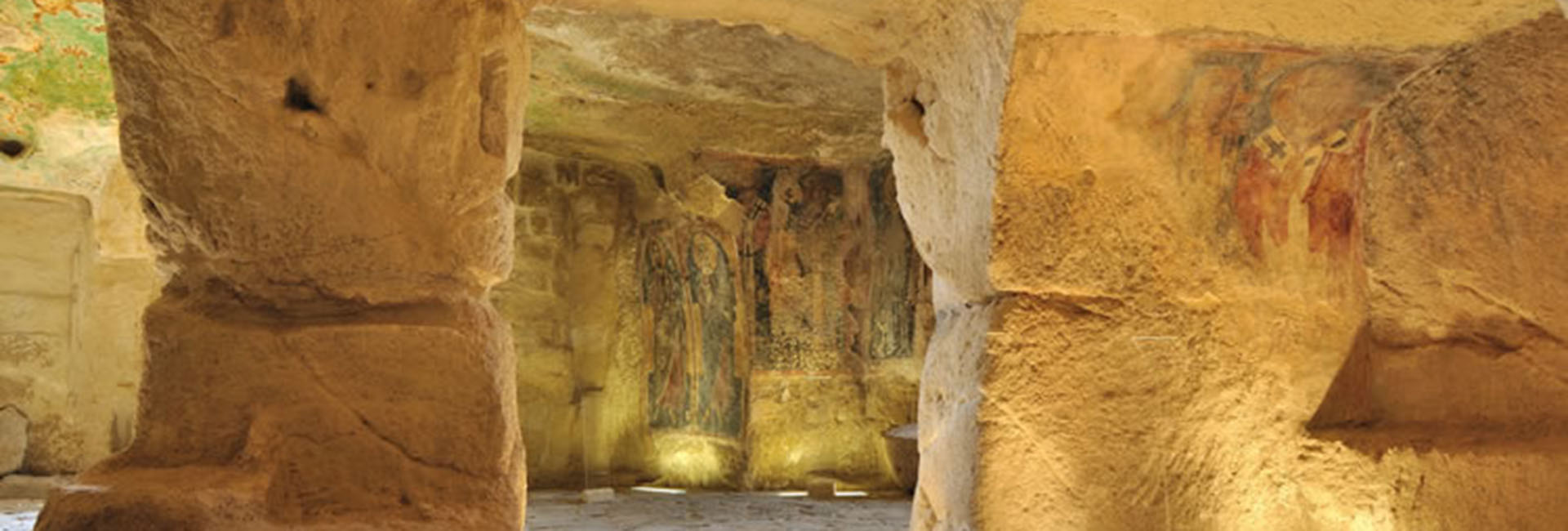San Giovanni in Monterrone
The rock church of San Giovanni called in “Monterrone” owes its name to the tuffaceous mass which dominates the Sasso Caveoso and the Casalnuovo district. Archaeological research, the dating of the frescoes and the few written documents date the original layout of the church from a period between the twelfth and thirteenth centuries.
Abandoned in ancient times for a long time, the church was annexed to the adjoining church of Santa Maria de Idris at the beginning of the 19th century; the creation of a narrow corridor connecting the two churches involved the almost total destruction of several frescos in a small part still visible on the left wall of the nave and on some stones placed in the presbyteral area.
The sequence of frescoes is interesting. Entering from Santa Maria de Idris you can admire, on the left, the fresco of Christ Pantocrator (12th century) and on the right, inside a niche, the images of the Archangel Michael and of St. Nicholas the bishop (XIII century). Opposite the residual face of a Saint monk (13th century) and the 16th century frescoes of Saint Onofrio and a Young Saint.
In the main room of the church, inside a niche, are painted on one side the images of St. James the Great and St. Peter the Apostle (XIII century), the latter depicted with a decorated nimbus of Cypriot derivation, and on the other a Annunciation (12th century) surmounted by the fresco of the Baptism of Christ in the river Jordan.
Looking at the main entrance you can see on the right a late fresco showing the saints John the Baptist and Evangelist and, on the left, several other frescoes with St. Jerome, a young saint, the face of St. Andrew and part of a Madonna with the Child, all of XIII sec.
Along the corridor of communication with Santa Maria de Idris, isolated on a rocky ridge, there was the fresco of St. John the Baptist (XIII-XIV sec.), Detached in 1972 on the initiative of the Superintendency of the Galleries of Basilicata due to the decay of the wall support and repeated vandalism that in that period, due to the abandonment of the Sassi, affected the churches and public places of the old districts.


